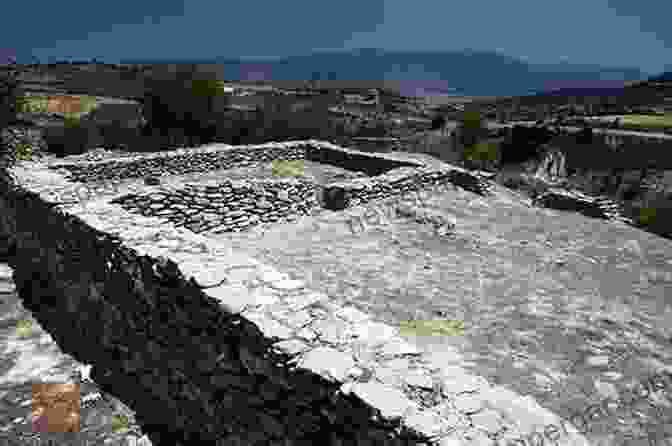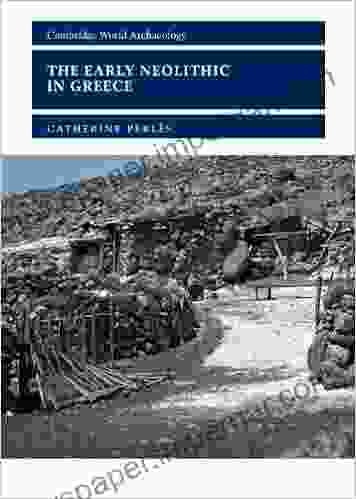Unveiling the Early Neolithic in Greece: A Journey into the Dawn of Civilization

5 out of 5
| Language | : | English |
| File size | : | 6873 KB |
| Text-to-Speech | : | Enabled |
| Screen Reader | : | Supported |
| X-Ray for textbooks | : | Enabled |
| Print length | : | 372 pages |
| Lending | : | Enabled |
The Early Neolithic period in Greece, spanning from approximately 7000 to 5800 BCE, marked a transformative era in human history. It witnessed the transition from a hunting-gathering lifestyle to an agricultural one, the emergence of settled communities, and the development of various technologies. This article will take you on a comprehensive journey through this fascinating chapter, exploring the archaeological discoveries, cultural practices, and environmental changes that shaped the Early Neolithic in Greece.
The Neolithic Revolution
The Neolithic Revolution, a pivotal moment in human development, occurred during the Early Neolithic period. This transition from a nomadic existence to a sedentary agricultural lifestyle was characterized by the adoption of domesticated plants and animals. Archaeological evidence from Greece suggests that the earliest farmers cultivated wheat, barley, lentils, and peas, while raising sheep, goats, and cattle. This shift in food production had profound implications, allowing for the establishment of permanent settlements and the growth of populations.
Archaeological Discoveries
Numerous archaeological sites in Greece provide valuable insights into the Early Neolithic period. Two of the most significant are Sesklo and Dimini in Thessaly. Excavations at Sesklo have revealed a settlement established around 6500 BCE, featuring rectangular houses with plastered walls and stone foundations. The site also yielded a rich collection of pottery, tools, and ornaments, indicating a thriving community engaged in agriculture, pottery-making, and animal husbandry.
Dimini, located near the coast of Thessaly, was another major Early Neolithic settlement. Excavations there have uncovered a fortified town dating back to around 5800 BCE. The town boasted impressive stone walls, circular houses, and a large communal building. Dimini also played a significant role in the development of pottery, with its distinctive red-on-white painted ceramics becoming a hallmark of the period.
Ceramic Art
Pottery played a vital role in Early Neolithic Greece. Ceramic vessels served both practical and symbolic purposes, utilized for cooking, storage, and rituals. The Early Neolithic potters of Greece demonstrated remarkable skill and ingenuity, creating a variety of shapes and decorations. Incised, impressed, and painted motifs adorned these vessels, often depicting animals, plants, and geometric patterns. The production of pottery required specialized knowledge and techniques, indicating the emergence of skilled craftspeople within the community.
One of the most striking examples of Early Neolithic pottery is the "Lady of Sesklo" figurine. Discovered at the Sesklo site, this small clay statuette depicts a female figure with exaggerated features, possibly representing a fertility goddess or a deity. Such figurines provide valuable insights into the symbolic and religious beliefs of the Early Neolithic people.
Environmental Changes
The Early Neolithic period in Greece coincided with significant environmental changes. The end of the last glacial period led to a gradual warming of the climate, resulting in increased rainfall and the expansion of forests. These changes created a favorable environment for agriculture, contributing to the emergence of settled communities. However, deforestation and soil erosion were also challenges that the Early Neolithic farmers had to contend with.
Social Organization
The transition to an agricultural lifestyle had implications for social organization within Early Neolithic communities. The need for cooperation in farming and other tasks likely strengthened social bonds and led to the emergence of community leaders. Evidence from archaeological sites suggests the presence of communal buildings and shared spaces, indicating a sense of collective identity and shared purpose.
Trade and Interactions
The Early Neolithic period in Greece was characterized by increased mobility and interaction between communities. Archaeological evidence reveals the exchange of goods, such as pottery, tools, and raw materials, over relatively long distances. This indicates the existence of trade networks and the development of connections between different regions. The movement of people and ideas also contributed to the spread of cultural practices and technologies.
The Early Neolithic period in Greece was a transformative era that laid the foundation for the development of civilization. The adoption of agriculture, the emergence of settled communities, and the development of pottery and other technologies marked a significant shift in human history. Archaeological discoveries from sites like Sesklo and Dimini have provided invaluable insights into the lives and practices of the people who shaped this pivotal period. The Early Neolithic in Greece stands as a testament to the ingenuity, adaptability, and creativity of our human ancestors.
References
- Giles, N. (2017). The Early Neolithic in Greece: The First Farmers. Cambridge University Press.
- Perlès, C. (2001). The Early Neolithic in Greece: An Archaeological Overview. Cambridge University Press.
5 out of 5
| Language | : | English |
| File size | : | 6873 KB |
| Text-to-Speech | : | Enabled |
| Screen Reader | : | Supported |
| X-Ray for textbooks | : | Enabled |
| Print length | : | 372 pages |
| Lending | : | Enabled |
Do you want to contribute by writing guest posts on this blog?
Please contact us and send us a resume of previous articles that you have written.
 Book
Book Novel
Novel Page
Page Chapter
Chapter Text
Text Story
Story Genre
Genre Reader
Reader Library
Library Paperback
Paperback E-book
E-book Magazine
Magazine Newspaper
Newspaper Paragraph
Paragraph Sentence
Sentence Bookmark
Bookmark Shelf
Shelf Glossary
Glossary Bibliography
Bibliography Foreword
Foreword Preface
Preface Synopsis
Synopsis Annotation
Annotation Footnote
Footnote Manuscript
Manuscript Scroll
Scroll Codex
Codex Tome
Tome Bestseller
Bestseller Classics
Classics Library card
Library card Narrative
Narrative Biography
Biography Autobiography
Autobiography Memoir
Memoir Reference
Reference Encyclopedia
Encyclopedia John Scott
John Scott Johnny Green
Johnny Green Jonathan Bonnitcha
Jonathan Bonnitcha Jon Hartley Fox
Jon Hartley Fox John Doe
John Doe John R Cronin
John R Cronin Joseph David Cress
Joseph David Cress John Norris
John Norris John R Butterly
John R Butterly Jonathan Barnes
Jonathan Barnes Joseph Telushkin
Joseph Telushkin John Whysner
John Whysner John Steinbeck
John Steinbeck Joseph Lumpkin
Joseph Lumpkin John Joseph Brady
John Joseph Brady John F Robyt
John F Robyt John W Swain
John W Swain Jorge Cruise
Jorge Cruise Jordan Markee
Jordan Markee Joseph Sangl
Joseph Sangl
Light bulbAdvertise smarter! Our strategic ad space ensures maximum exposure. Reserve your spot today!

 Austin FordStarting Tips Action Points Boss Combat Walkthrough And System Necessities:...
Austin FordStarting Tips Action Points Boss Combat Walkthrough And System Necessities:...
 Shannon SimmonsUnlock the Secrets of Liberty City and Vice City: The Ultimate GTA Cheat...
Shannon SimmonsUnlock the Secrets of Liberty City and Vice City: The Ultimate GTA Cheat...
 Mario SimmonsHegel Ultimate Collection: A Comprehensive Exploration of Spirit, History,...
Mario SimmonsHegel Ultimate Collection: A Comprehensive Exploration of Spirit, History,... Fred FosterFollow ·16.7k
Fred FosterFollow ·16.7k Gilbert CoxFollow ·17.6k
Gilbert CoxFollow ·17.6k Octavio PazFollow ·17.2k
Octavio PazFollow ·17.2k Cristian CoxFollow ·15.3k
Cristian CoxFollow ·15.3k Jacob FosterFollow ·2k
Jacob FosterFollow ·2k Aron CoxFollow ·4.7k
Aron CoxFollow ·4.7k Kenneth ParkerFollow ·11.7k
Kenneth ParkerFollow ·11.7k John UpdikeFollow ·12k
John UpdikeFollow ·12k

 Jake Powell
Jake PowellThe Constitution of the State of Colorado: A Legacy of...
Since its adoption in 1876, the...

 Devin Ross
Devin RossFrom Plato to Plantinga: A Journey Through the History of...
Philosophy is the study of...

 Robin Powell
Robin PowellWords That Hurt, Words That Heal: The Power of Language...
Words are powerful. They can...

 T.S. Eliot
T.S. EliotTantalize Your Taste Buds with Over 90 Low-Carb Ethnic...
Indulge in a Culinary Adventure with "Over...
5 out of 5
| Language | : | English |
| File size | : | 6873 KB |
| Text-to-Speech | : | Enabled |
| Screen Reader | : | Supported |
| X-Ray for textbooks | : | Enabled |
| Print length | : | 372 pages |
| Lending | : | Enabled |










